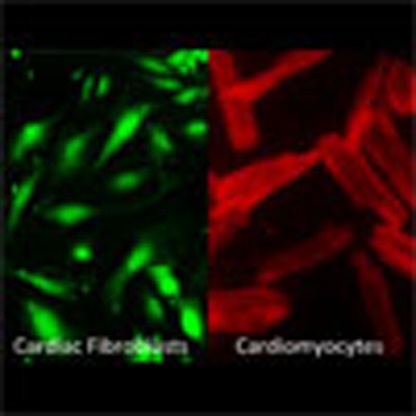- Record: found
- Abstract: found
- Article: found
The plasma membrane calcium ATPase 4 signalling in cardiac fibroblasts mediates cardiomyocyte hypertrophy

Read this article at
Abstract
The heart responds to pathological overload through myocyte hypertrophy. Here we show that this response is regulated by cardiac fibroblasts via a paracrine mechanism involving plasma membrane calcium ATPase 4 (PMCA4). Pmca4 deletion in mice, both systemically and specifically in fibroblasts, reduces the hypertrophic response to pressure overload; however, knocking out Pmca4 specifically in cardiomyocytes does not produce this effect. Mechanistically, cardiac fibroblasts lacking PMCA4 produce higher levels of secreted frizzled related protein 2 (sFRP2), which inhibits the hypertrophic response in neighbouring cardiomyocytes. Furthermore, we show that treatment with the PMCA4 inhibitor aurintricarboxylic acid (ATA) inhibits and reverses cardiac hypertrophy induced by pressure overload in mice. Our results reveal that PMCA4 regulates the development of cardiac hypertrophy and provide proof of principle for a therapeutic approach to treat this condition.
Abstract
 Restricting hypertrophic heart growth in response to pathologic overload is an unmet
therapeutic need. Here, the authors show that blocking Ca
2+ signaling controlled by the transport protein PMCA4 in cardiac fibroblasts enhances
secretion of a potent Wnt signaling inhibitor, sFRP2, and prevents the development
of pathologic cardiac hypertrophy in mice.
Restricting hypertrophic heart growth in response to pathologic overload is an unmet
therapeutic need. Here, the authors show that blocking Ca
2+ signaling controlled by the transport protein PMCA4 in cardiac fibroblasts enhances
secretion of a potent Wnt signaling inhibitor, sFRP2, and prevents the development
of pathologic cardiac hypertrophy in mice.
Related collections
Most cited references38
- Record: found
- Abstract: found
- Article: not found
In vivo reprogramming of murine cardiac fibroblasts into induced cardiomyocytes
- Record: found
- Abstract: not found
- Article: not found
Cardiac plasticity.
- Record: found
- Abstract: found
- Article: not found